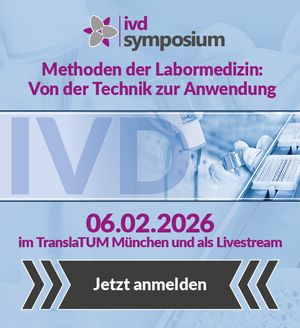Literatur
[1] Bianchi D et al. Fetal gender and aneuploidy detection using fetal cells in maternal blood: analysis of NIFTY I data. National Institute of Child Health and Development Fetal Cell Isolation Study. Prenat Diagn 2002;22:609–15. doi:10.1002/pd.347.
[2] Lo Y et al. Presence of fetal DNA in maternal plasma and serum. Lancet 1997;350:485–7. doi:10.1016/S0140-6736(97)02174-0.
[3] Fiorentino F et al. The importance of determining the limit of detection of non-invasive prenatal testing methods: The importance of determining the limit of detection of NIPT methods. Prenat Diagn 2016;36:304–11. doi:10.1002/pd.4780.
[4] Fan H, Quake S. Sensitivity of Noninvasive Prenatal Detection of Fetal Aneuploidy from Maternal Plasma Using Shotgun Sequencing Is Limited Only by Counting Statistics. PLoS ONE 2010;5:e10439. doi:10.1371/journal.pone.0010439.
[5] Gil M et al. Analysis of cell-free DNA in maternal blood in screening for fetal aneuploidies: updated meta-analysis. Ultrasound Obstet Gynecol 2015;45:249–66. doi:10.1002/uog.14791.
[6] Ashoor G et al. Fetal Fraction in Maternal Plasma Cell-Free DNA at 11 to13 Weeks of Gestation: Effect of Maternal and Fetal Factors. Fetal Diagn Ther 2012;31:237–43. doi:10.1159/000337373.
[7] Chiu RW et al. Noninvasive prenatal diagnosis of fetal chromosomal aneuploidy by massively parallel genomic sequencing of DNA in maternal plasma. Proc Natl Acad Sci 2008;105:20458–20463.
[8] Stumm Met al. Update der AG Reproduktionsgenetik der DGRM: Nicht-invasive Pränataltests aus mütterlichem Blut. J Für Reproduktionsmedizin Endokrinol-J Reprod Med Endocrinol 2014;11:186–188.
[9] Russell Let al. X chromosome loss and ageing. Cytogenet Genome Res 2007;116:181–5. doi:10.1159/000098184.
[10] Hook E, Warburton D. Turner syndrome revisited: review of new data supports the hypothesis that all viable 45,X cases are cryptic mosaics with a rescue cell line, implying an origin by mitotic loss. Hum Genet 2014;133:417–24. doi:10.1007/s00439-014-1420-x.


